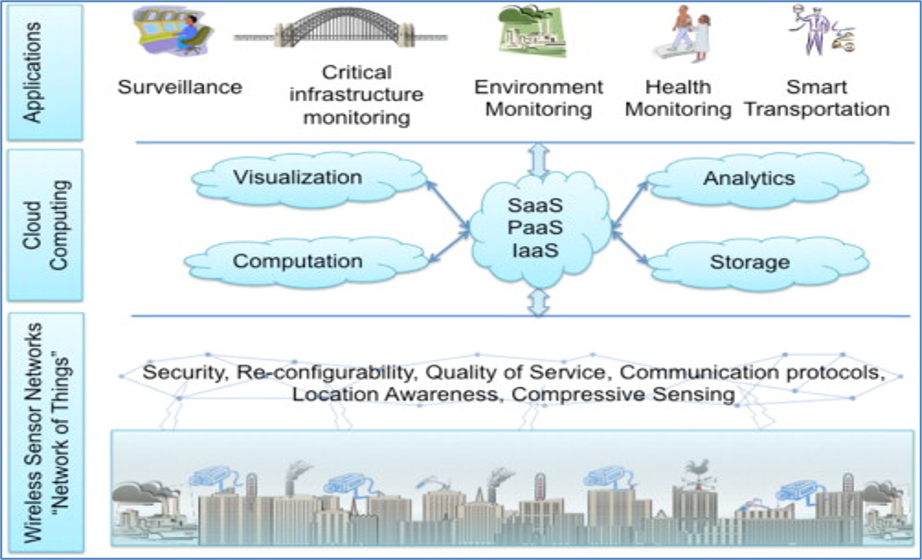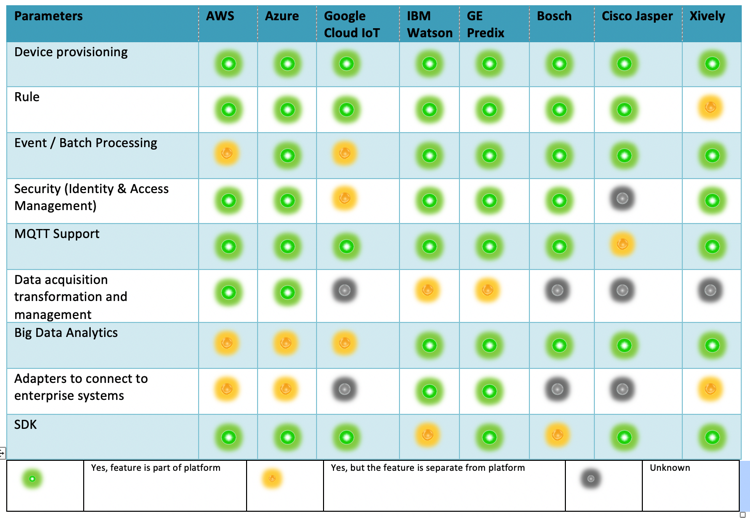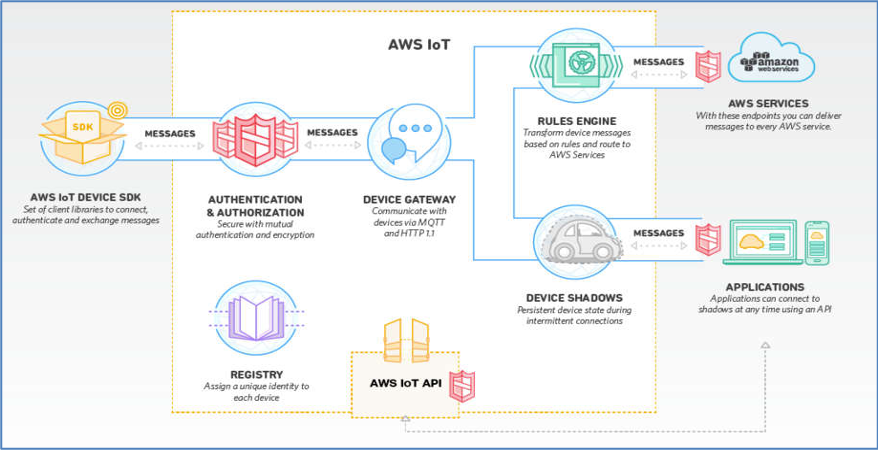IOT Cloud Platforms - A Comparative Study
- 4 minutes read - 658 wordsThe vision of IoT can be seen from two perspectives— ‘Internet’ centric and ‘Thing’ centric. The Internet centric architecture will involve internet services being the main focus while data is contributed by the objects. In the object centric architecture, the smart objects take the center stage.
In order to realize the full potential of cloud computing as well as ubiquitous sensing, a combined framework with a cloud at the center seems to be most viable. This not only gives the flexibility of dividing associated costs in the most logical manner but is also highly scalable. Sensing service providers can join the network and offer their data using a storage cloud; analytic tool developers can provide their software tools; artificial intelligence experts can provide their data mining and machine learning tools useful in converting information to knowledge and finally computer graphics designers can offer a variety of visualization tools.
Cloud computing can offer these services as Infrastructures, Platforms or Software where the full potential of human creativity can be tapped using them as services. The data generated, tools used and the visualization created disappears into the background, tapping the full potential of the Internet of Things in various application domains. The Cloud integrates all ends by providing scalable storage, computation time and other tools to build new businesses.

Major Platforms – A Quick Snapshot
Below are given the quick snapshot of major IoT Cloud platforms with their main key features:
AWS IoT
- Supports HTTP, WebSockets, and MQTT
- Rules Engine: A rule can apply to data from one or many devices, and it can take one or many actions in parallel. It can route messages to AWS endpoints including AWS Lambda, Amazon Kinesis, Amazon S3, Amazon Machine Learning, Amazon DynamoDB, Amazon CloudWatch, and Amazon Elasticsearch Service with built-in Kibana integration (Kibana is an open source data visualization plugin for Elasticsearch.)
- Device Shadows: Create a persistent, virtual version, or “shadow,” of each device that includes the device’s latest state.
Azure IoT Suite
- Easily integrate Azure IoT Suite with your systems and applications, including Salesforce, SAP, Oracle Database, and Microsoft Dynamics
- Azure IoT Suite packages together Azure IoT services with preconfigured solutions.
- Supports HTTP, Advanced Message Queuing Protocol (AMQP), and MQ Telemetry Transport (MQTT).
- Gateway SDK – a framework to create extensible gateway solutions, code which sends data from multiple devices over gateway to cloud connection
Google Cloud IoT
- Take advantage of Google’s heritage of web-scale processing, analytics, and machine intelligence.
- Utilizes Google’s global fiber network (70 points of presence across 33 countries) for ultra-low latency

https://cloud.google.com/iot-core/
IBM Watson IoT
- Machine Learning - Automate data processing and rank data based on learned priorities.
- Raspberry Pi Support - Develop IoT apps that leverage Raspberry Pi, cognitive capabilities and APIs
- Real-Time Insights - Contextualize and analyze real-time IoT data
 https://cloud.ibm.com/catalog/services/internet-of-things-platform
https://cloud.ibm.com/catalog/services/internet-of-things-platform
GE Predix
- Designed mainly for IIoT platforms.
- Supports over 60 regulatory frameworks worldwide.
- Based on Pivotal Cloud Foundry (Cloud Foundry is an open source cloud computing platform as a service (PaaS))
 https://www.ge.com/digital/iiot-platform
https://www.ge.com/digital/iiot-platform
Bosch IoT Suite
- Bosch IoT Analytics: Our analytics services make analyzing field data much simpler. The anomaly detection service helps investigate problems that occur in connected devices. The usage profiling service can determine typical usage patterns within a group of devices.
- Bosch IoT Hub: Messaging backbone for device related communication as attach point for various protocol connectors
- Bosch IoT Integrations: Integration with third-party services and systems
https://www.bosch-iot-suite.com/capabilities-bosch-iot-suite/
Cisco Jasper IoT
- Focus on services.
- Control Center: Providing a vast array of flexible ways to automate your IoT services.
https://www.cisco.com/c/en/us/solutions/internet-of-things/iot-control-center.html
Xively
- The messaging broker supports connections using native MQTT and WebSockets MQTT.
- Xively provides a C client library for use on devices
- Xively provides an application for integrating connected products into the Salesforce Service Cloud.
Comparative Analysis
We have done extensive study and trials and at this moment here is our findings, below is given the matrix of parameters vs different cloud platforms.

This paper was also supported by Ram Chauhan
#framework #IOT #platform #comparison #Analysis #Cloud #Azure #Google #IBM #GE #Bosch #technology
